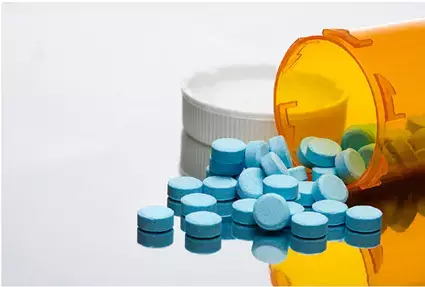- Home
- Medical news & Guidelines
- Anesthesiology
- Cardiology and CTVS
- Critical Care
- Dentistry
- Dermatology
- Diabetes and Endocrinology
- ENT
- Gastroenterology
- Medicine
- Nephrology
- Neurology
- Obstretics-Gynaecology
- Oncology
- Ophthalmology
- Orthopaedics
- Pediatrics-Neonatology
- Psychiatry
- Pulmonology
- Radiology
- Surgery
- Urology
- Laboratory Medicine
- Diet
- Nursing
- Paramedical
- Physiotherapy
- Health news
- Fact Check
- Bone Health Fact Check
- Brain Health Fact Check
- Cancer Related Fact Check
- Child Care Fact Check
- Dental and oral health fact check
- Diabetes and metabolic health fact check
- Diet and Nutrition Fact Check
- Eye and ENT Care Fact Check
- Fitness fact check
- Gut health fact check
- Heart health fact check
- Kidney health fact check
- Medical education fact check
- Men's health fact check
- Respiratory fact check
- Skin and hair care fact check
- Vaccine and Immunization fact check
- Women's health fact check
- AYUSH
- State News
- Andaman and Nicobar Islands
- Andhra Pradesh
- Arunachal Pradesh
- Assam
- Bihar
- Chandigarh
- Chattisgarh
- Dadra and Nagar Haveli
- Daman and Diu
- Delhi
- Goa
- Gujarat
- Haryana
- Himachal Pradesh
- Jammu & Kashmir
- Jharkhand
- Karnataka
- Kerala
- Ladakh
- Lakshadweep
- Madhya Pradesh
- Maharashtra
- Manipur
- Meghalaya
- Mizoram
- Nagaland
- Odisha
- Puducherry
- Punjab
- Rajasthan
- Sikkim
- Tamil Nadu
- Telangana
- Tripura
- Uttar Pradesh
- Uttrakhand
- West Bengal
- Medical Education
- Industry
NSAIDs Most Effective and Safest for Acute Pediatric Pain: JAMA

According to a systematic review and meta-analysis of 41 randomized clinical trials, involving nearly 5,000 children, NSAIDs, ketamine, and mid- to high-potency opioids all reduced acute pediatric pain, though the effects were modest. Among these options, NSAIDs provided the greatest benefit with the least harm, making them a preferred choice for managing acute pain in children. The study, led by Laura Olejnik, MD, of London Health Sciences in Ontario, Canada, confirmed that all three drug categories were more effective than a placebo with at least moderate certainty. The findings of the study have appeared in JAMA Pediatrics.
Several pharmacologic options exist for the management of acute pediatric pain; however, their comparative effectiveness remains uncertain. A study was done to assess the relative benefits and harms of pharmacotherapy for acute pediatric pain through a network meta-analysis of randomized clinical trials. Trials that enrolled children (aged <18 years) with acute pain and randomized them to receive a pharmacologic analgesic vs an alternate analgesic or placebo were included.
Pairs of reviewers independently reviewed abstracts, extracted data, and assessed the risk of bias in eligible trials. A frequentist random-effects model was used for all meta-analyses, and the certainty of evidence was assessed for treatment effects using the Grading of Recommendations Assessment, Development, and Evaluation approach. The primary outcomes were pain severity (range, 0-10 cm using a visual analogue scale; minimally important difference [MID], 1 cm), need for rescue medication, symptom relief, and adverse drug events.
Results A total of 41 trials involving 4935 children were included. High- to moderate-certainty evidence found that compared with placebo, nonsteroidal anti-inflammatory drugs (NSAIDs) (weighted mean difference [WMD], −1.29; 95% CI, −1.89 to −0.70; modelled risk difference [RD] for achieving the MID, 16%), ketamine (WMD, −1.12; 95% CI, −2.09 to −0.14; modelled RD for achieving the MID, 14%), and mid-high potency opioids (WMD, −1.19; 95% CI, −1.83 to −0.55; modelled RD for achieving the MID, 15%) reduced pain. Only NSAIDs reduced the need for rescue medication (relative risk [RR], 0.31; 95% CI, 0.14 to 0.68; modelled RD, 16% fewer patients).
Neither NSAIDs (RR, 0.69; 95% CI, 0.31 to 1.55) nor acetaminophen (RR, 0.63; 95% CI, 0.21 to 1.87) increased the risk of short-term gastrointestinal adverse events. All other comparisons showed moderate-certainty evidence of little to no difference from placebo or were supported by low/very low–certainty evidence. Compared with placebo, NSAIDs, ketamine, and mid-to high-potency opioids are effective in reducing acute pediatric pain. NSAIDs provide the greatest benefits and least harm, suggesting that they should be the first-line therapy for acute painful conditions in children.
Reference:
Olejnik L, Lima JP, Sadeghirad B, et al. Pharmacologic Management of Acute Pain in Children: A Systematic Review and Network Meta-Analysis. JAMA Pediatr. Published online February 03, 2025. doi:10.1001/jamapediatrics.2024.5920
Dr. Shravani Dali has completed her BDS from Pravara institute of medical sciences, loni. Following which she extensively worked in the healthcare sector for 2+ years. She has been actively involved in writing blogs in field of health and wellness. Currently she is pursuing her Masters of public health-health administration from Tata institute of social sciences. She can be contacted at editorial@medicaldialogues.in.
Dr Kamal Kant Kohli-MBBS, DTCD- a chest specialist with more than 30 years of practice and a flair for writing clinical articles, Dr Kamal Kant Kohli joined Medical Dialogues as a Chief Editor of Medical News. Besides writing articles, as an editor, he proofreads and verifies all the medical content published on Medical Dialogues including those coming from journals, studies,medical conferences,guidelines etc. Email: drkohli@medicaldialogues.in. Contact no. 011-43720751


